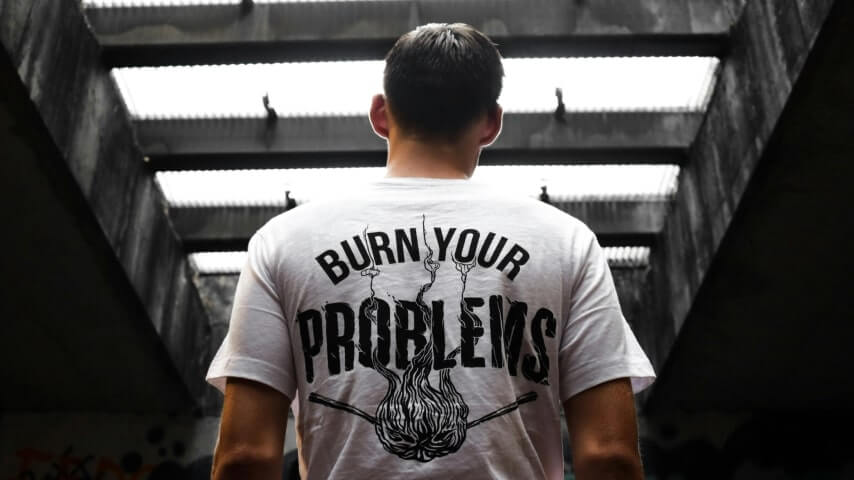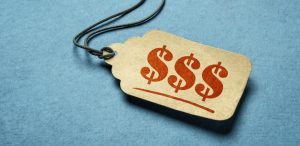Custom shirts, endless possibilities
Ever dreamed of turning your passion for t-shirts into a thriving business? Well, steep your favorite tea, grab a pen, and get ready to brew up a killer business plan with our ultimate guide!
Whether you’re a seasoned entrepreneur or just starting out, a solid business plan is your secret weapon for growing your t-shirt sales.
In this guide, we’ll break down the essentials of a winning t-shirt business plan, from researching your target market to calculating those all-important profit margins. We’ll even show you how to leverage the power of print-on-demand to simplify your production process and get your designs in the hands (and on the backs) of eager customers.
Key takeaways
- A t-shirt business plan provides a clear roadmap for guiding startup actions and attracting investment.
- Print on Demand significantly reduces the inventory and operating costs of your t-shirt company.
- A comprehensive business plan includes t-shirt market analysis, operational strategies, and financial projections.
- Regular updates and expert feedback can refine your business plan, making sure it stays relevant and effective.
- Starting with Printify simplifies setting up a t-shirt company, making it accessible to entrepreneurs with various budgets.
Why is it important to have a business plan?

Your t-shirt business plan is your blueprint for navigating the thrilling – and sometimes unpredictable – world of apparel entrepreneurship.
Why it matters?
- Clarity and focus – A business plan helps you define your goals, strategies, and target market, ensuring you stay laser-focused on your vision.
- Informed decision-making – Your plan outlines your financial projections and operating costs, helping you make smart, data-driven decisions.
- Risk management – By identifying potential challenges and outlining contingency plans, your business plan helps you mitigate risks and navigate obstacles.
In short, a t-shirt business plan is your compass, guiding you towards profitability and growth. Don’t leave your success to chance – create a plan that sets you up for tee-riffic results.
Why choose Print on Demand for fulfillment?
POD is a streamlined fulfillment model where items are printed and shipped only after an order is made, reducing the need for inventory management. This model offers a competitive advantage by eliminating the necessity to pre-purchase or store bulk inventory, allowing for higher profit margins.
For t-shirt store owners, especially online, POD significantly reduces operating expenses associated with physical stores. By adopting a POD approach, an online t-shirt business can offer various designs and sizes without the risk of unsold stock accumulating.
This saves resources and enables rapid adaptation to market trends and customer preferences, ensuring your t-shirt company’s offerings remain fresh and relevant.
Moreover, print-on-demand services allow entrepreneurs to experiment with designs without financial fallout, making it an ideal strategy for those looking to test the waters of the fashion industry with minimal initial investment.
How to write a winning t-shirt business plan

Crafting a detailed t-shirt business plan is important, whether you’re launching a new brand or scaling an existing one. Here, we’ll walk you through the essential components of a compelling plan, making sure you have a solid foundation for your entrepreneurial journey.
Try using a shirt business plan template (like this Shopify template), as it can streamline this process, adapting it to reflect your unique business model and business idea.
Executive summary
This is your elevator pitch – a brief overview of your business concept that’ll hook your readers from the start. Keep it concise, compelling, and leave them wanting more.
- Company overview. Briefly describe your t-shirt business concept, focusing on what sets it apart from the competition, what is its unique value proposition.
- Goals and objectives. Outline what you aim to achieve in the short and long term.
- Products and market. Introduce the types of t-shirts you’ll sell and identify your target market.
- Financial projections. Summarize your expected financial outcomes and what funding you’ll need to achieve these goals.
Business description
Now, it’s time to dive deeper into the details. Describe your t-shirt business, including your mission statement, vision, and business structure.
- Detailed description. Offer an in-depth look at your t-shirt business, including the unique aspects of your product offerings.
- Mission and vision. State your business’s mission and vision, clarifying the core values and what you aim to accomplish.
- Business structure. Discuss whether your business is a sole proprietorship, LLC, corporation, etc.
- Location and online presence. Detail where your business will operate and how you plan to use digital platforms to increase your presence.
The information provided here is for general informational purposes only. It is not intended as professional or legal advice. Always consult with a qualified professional or legal advisor regarding specific questions or concerns you may have.
Conduct market research and analysis
Before selling t-shirts, get to know your market inside and out. Research the t-shirt industry trends, identify your target market, and analyze your competitors.
- Industry overview. Provide a snapshot of the t-shirt industry, including current trends and growth potential.
- Customer analysis. Define who your customers are, segmenting the market to tailor your marketing strategies effectively.
- Competitor analysis. Analyze your main competitors, their strengths, and weaknesses.
- SWOT analysis. Conduct a Strengths, Weaknesses, Opportunities, and Threats analysis to better understand your business landscape.
Marketing and sales strategy
How will you get your awesome t-shirts in front of the right people? Every successful t-shirt business needs a sales and marketing strategy.
- Branding and positioning. Explain how you’ll position your brand in the market and the branding strategy you’ll employ.
- Marketing channels. Identify which platforms and tactics, such as social media and email marketing, you’ll use to reach your target customers.
- Sales channels. Outline how you plan to sell t-shirts, whether through an online store, at craft fairs, or via wholesalers.
- Customer acquisition and retention. Discuss how you’ll attract and keep customers, highlighting any loyalty programs or engagement strategies.
Product line and services
It’s time to show off your designs! Describe your t-shirt products in detail, from the design process to the materials and printing techniques you’ll use.
- Product description. Describe your range of t-shirts, the designs, and the production process.
- Pricing strategy. Detail your pricing model, considering costs, market positioning, and customer expectations.
- Product extensions. Consider potential future products that could expand your brand’s reach.
Operational plan with Print on Demand
This is where you explain how POD fits into your business model (hint: Printify’s a great option!).
- POD integration. Discuss how POD will be integrated into your business operations, from design to delivery.
- POD provider management. Choose and manage your POD provider to guarantee quality and efficiency.
- Quality control and returns. Set up processes to handle quality control and manage returns effectively.
Management and organization
Who’s the boss? Outline your organizational structure, introduce your key team members and their roles, and provide brief bios highlighting their experience.
- Organizational structure. Define the structure of your business, including the key roles and responsibilities of each team member.
- Team bios. Provide bios of key management team members, highlighting their expertise and experience.
- Staffing needs. Plan for current and future staffing needs to support business operations.
Financial plan and projections
Money matters. This section covers your startup costs, funding requirements, and financial projections.
- Startup costs and funding. Outline the initial costs to start your t-shirt business and identify the sources of capital – personal savings, loans, or credit cards.
- Revenue and pricing models. Describe how you’ll generate revenue and the assumptions behind your pricing strategy.
- Financial projections. Include detailed profit and loss forecasts, cash flow projections, and a break-even analysis.
- Funding strategy. Detail your approach to securing additional funding or investment if needed.
Appendices
This is where you store all the extra goodies that support your business plan. Include market research data, resumes of key team members, legal documents, sample designs, and detailed financial statements.
- Supporting Documents: Attach any additional documentation that supports your business plan, such as market research data, legal documents, or resumes of key staff.
- Sample Designs and Product Images: Showcase examples of your t-shirts and designs to give a clearer picture of your offerings.
- Financial Statements: Provide detailed financial statements and projections to give stakeholders a comprehensive view of your financial strategy.
Don’t worry, your t-shirt printing business plan isn’t a romantic novel. Just keep the entire plan clear, concise, and focused on the most important aspects of your business. And remember, a winning t-shirt business plan is a living document – review and update it regularly as your business grows and evolves.
Tips for writing an effective t-shirt business plan

Nobody wants to read a boring business plan, so here are some tips to make yours stand out:
- Keep it snappy. Avoid jargon and fluff. A clear and concise plan is easier to read and understand.
- Show, don’t just tell. Use visuals like charts, graphs, and images to break up text and illustrate your points. After all, a picture is worth a thousand words, right?
- Stay fresh. Your business plan isn’t a one-and-done deal. Review and update it regularly as your business grows and changes. This will help you stay on track and make informed decisions.
- Get feedback. Don’t be afraid to ask for help. Seek feedback from mentors, industry experts, or even fellow entrepreneurs. They can offer valuable insights and help you fine-tune your plan.
Start a t-shirt business with Printify

Make your t-shirt business idea come to life – Printify will cater to your needs from A to Z, no matter how many shirts you want to sell – ten or ten thousand!
FAQ
Generally speaking, printing t-shirts can be quite profitable with good design, marketing, and brand positioning. Profit margins vary widely, but with effective cost management and sales strategies, they can range from moderate to very high.
To create a business plan for a t-shirt company, start with a clear outline that includes an executive summary, business description, market analysis, marketing and sales strategies, operational plan, financial projections, and appendices. Use tools like Printify’s resources for detailed guidance and templates.
Starting a t-shirt business with no money is easy with Printify:
- Minimal upfront investment for inventory and production.
- A huge Catalog of blank t-shirts and more.
- A free Product Creator for creating unique t-shirt designs.
- Integration with a sales channel of your choice – online marketplaces and platforms like Etsy, Shopify, eBay, WooCommerce and others.
- Popular t-shirt printing methods – direct-to-garment, direct-to-film, all-over-print.
- Fulfillment centers worldwide.
To start a t-shirt business from home, define your niche and target audience, select a POD provider to eliminate the need for inventory, set up an online store, and utilize digital marketing strategies to promote your products. Make sure you have a designated space to work efficiently and manage your operations.
To summarize
Selling t-shirts online can be a lucrative endeavor with the right strategy and tools. A well-crafted business plan is essential to mapping out your path. Opting for a POD model, like Printify, minimizes upfront costs and simplifies logistics, making it easier to create t-shirt designs, launch a brand, and scale your business from anywhere.
By staying clear, concise, and adaptive with your business plan, and continually seeking feedback, you can build a successful t-shirt company that stands out in the competitive market.













